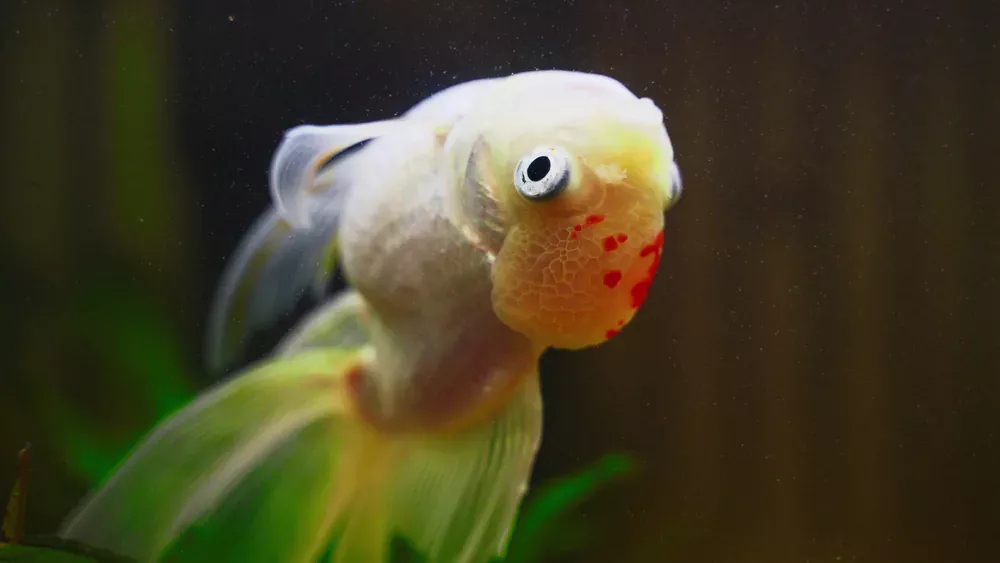We have all been there. We’ve changed the water in our aquariums and something did not turn out as we wanted it to. Sometimes this is because of bad water quality or too much fish waste in the tank. Or maybe you just messed up your testing kit and didn’t know it. There can be many reasons why your fish died after water change, I have discussed the most common of them here in this article. So let’s get started.
Reasons Water Changes Are Important For Your Fish Health
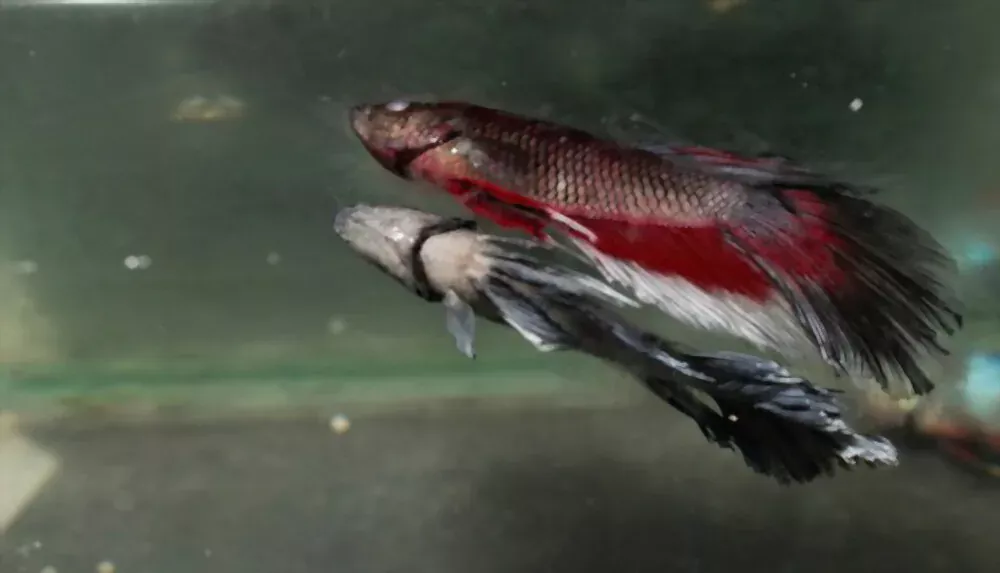
There are many reasons why frequent water changes are very important:
1- To Remove The Leftover Food
The first reason why you should do water changes is to remove the leftover food from your tank. Fish waste contains ammonia, which is toxic to fish and can be harmful to their health. It can also affect the water quality in the tank, which can lead to a variety of problems for your fish, including death.
By doing water changes regularly, you will be able to remove this waste from your tank and keep it at a safe level for your fish.
2- To Lower Algae Growth
Algae growth is caused by a variety of factors, including poor water quality and overfeeding your fish. By cleaning out any leftover food from your fish’s tank, you will also be able to reduce algae growth in the tank because the food that was left behind has been removed from the water column.
3- Increases The Water Quality
You should make sure that there are no unnecessary chemicals or other toxic substances in the water that your fish are living in. If there are any such substances present in their water, they can harm their health and make them sick. It is therefore important to make sure that all these substances are removed from their tanks before they are given new water to drink.
4- To Remove The Buildup Of Minerals
Water changes are especially important for fish that have a lot of minerals in their tank, such as saltwater fish. These minerals can become concentrated in the water and cause problems for your fish if they don’t get rid of them. When you replace the water in your tank, it carries away these minerals, which helps to keep your tank healthy.
5- To Clear Out Toxic Bacteria
Water changes are also important because they help to remove toxins from the water and clear out any harmful bacteria that may be present in your tank. This can prevent the growth of germs that could harm your fish if left unchecked.
6- To Reduce Stress Levels In Your Fish
Because stress is one of the biggest causes of disease amongst pets, it’s important that you keep your aquarium clean so that you don’t introduce new stressors into their lives by introducing new foods or removing old food items from their aquariums.
All The Reasons Why My Fish Died After Water Change
Here is the list of all the possible reasons why your fish died after the water change:
1- New Water’s Temperature Was Too Low
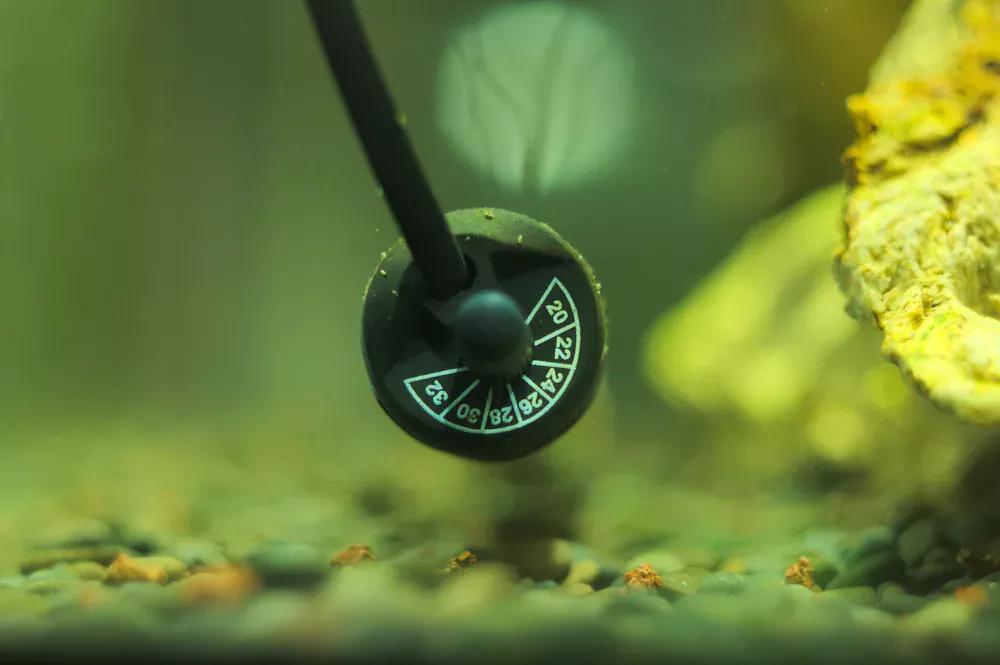
The temperature of the new water was too low for the aquarium. The result was that your fish died. This is a very common mistake when you change the water. You need to make sure that your aquarium has enough heat in it to keep the water at a safe temperature for your fish. If it’s too cold, they will die before you change their water.
In addition to this, you also need to make sure that there is enough dissolved oxygen in the aquarium for your fish to breathe properly. If there isn’t enough dissolved oxygen in the water, then it’s going to be very hard for them to survive and even harder for them to thrive.
2- You Haven’t Added The Dechlorinator
This is the most common reason why your fish died after water change. You may have forgotten to add a dechlorinator when you changed the water. Or you may have added it too late, which means that the new water has already been contaminated with ammonia and nitrite.
If you added a dechlorinator and your tank is still full of ammonia and nitrites, then there’s no way for them to be removed from your tank by natural processes. In this case, your fish will die because they cannot detoxify those compounds from their system.
3- The Nitrate Levels Are Too High
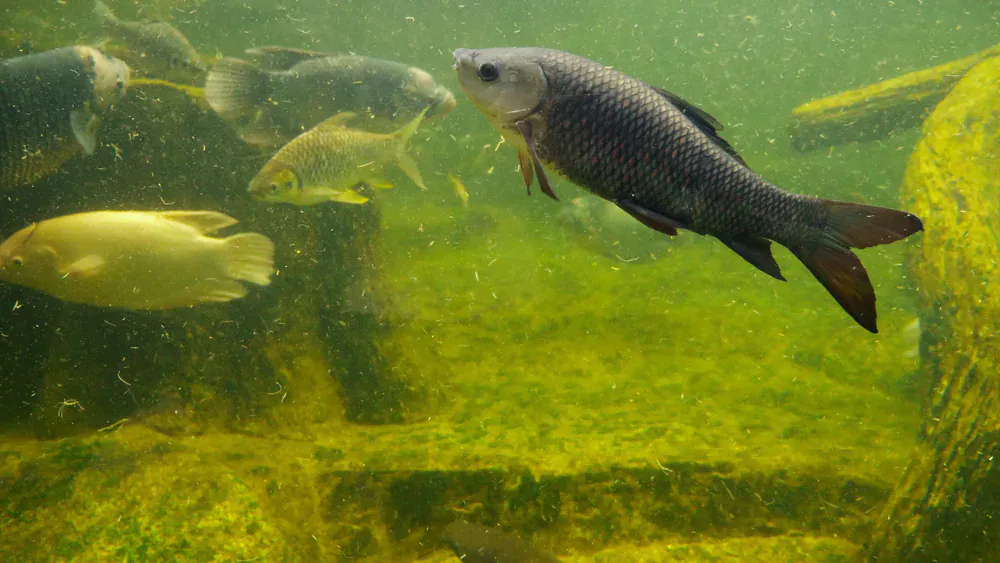
Nitrates are a by-product of organic matter decay. When plants die and decompose (decompose), they release nitrates into soil and water. The same thing happens when dead fish decompose at the bottom of your tank. This is why you will sometimes see algae bloom in your aquarium after a water change; more algae means more nutrients for your tank plants.
When nitrates reach high levels (usually greater than 20 parts per million), they can cause significant harm to fish health, especially if it builds up over time or if there’s no way for your fish to break down or get rid of them (like if there’s no filter or skimmer).
4- Whole Substrate Was Vacuumed
You vacuumed the entire substrate, which will suck up all the nitrates. If you’re using a sponge filter, this is fine since it has a bag of water to help hold on to some of those nitrates. However, if your tank is only cycled and still has a lot of ammonia in it, then this could result in high nitrate levels. If that’s the case, you may want to consider increasing your dose of ammonia until it goes down again.
You changed out all of your filter media at once (filter pads, carbon, and ceramic rings). This can result in an ammonia spike due to all of those old bacteria dying off and needing to be replaced with new ones. Once that spike subsides, however, you’ll have way too much nitrate coming into your tank from all those dead bacteria.
5- Too Much Saturated Gas In Tap Water
There was too much saturated gas in your tap water. If you’ve ever seen a leaky faucet, you know that the water coming out of it is usually cloudy and smells like rotten eggs. This is because the water has dissolved air bubbles in it. When you change your aquarium water, all those dissolved air bubbles are released and they can be very damaging to your fish.
How To Know if Fish Is Dying After Water Change
Here are a few of the signs and symptoms that mean your fish is about to die
1- Change In Color
The first sign is that the body of the fish starts to change color. This is usually a bright red or orange, and this can be caused by a number of factors.
One potential cause of this is ammonia, which is produced by fish waste and other organic materials in their bodies. Ammonia binds with proteins in the water and makes them more soluble, which means they can be more easily removed from the water.
The second potential cause of this change in color is copper sulfate. Copper sulfate will turn your water an opaque blue-green or blue-black color, which is visible even when you have “clear” water. Copper sulfate has many uses for aquarists and can be found in most aquarium shops or online. It’s often used to treat tap water for garden ponds because it works as an oxidant (it cleans up contaminants in your pond). However, copper sulfate also reacts with ammonia in your fish’s bodies and turns their blood a bright red color — a sign that something is wrong with your fish!
2- Swimming At The Surface Of The Water
When you perform a water change, it often causes stress for your fish. They will be confused and worried about what is going on in their tank. However, when a fish starts to swim at the top of its tank and swims around frantically, it may mean that there is something wrong with the water quality or pH level.
There are several reasons why this could happen. For example, if you are changing out an old filter, then this could cause some serious issues because it may contain residue from previous filtration processes. This residue can cause algae growth or bacteria growth in your aquarium.
3- Laziness
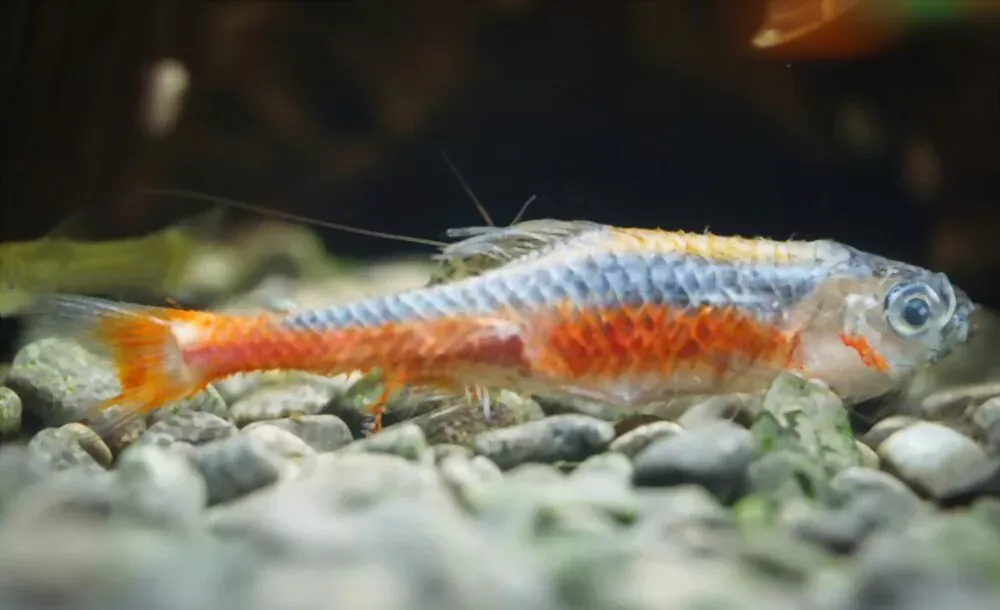
They do not actively swim and they do not eat very much. They also have a strange appearance, with their eyes looking sunken in their heads and their gills hanging out of their mouths. This can be a sign that a fish is dying or just sick. The reason for this is that the stress of a change in water chemistry has caused the fish to slow down and rest in an effort to preserve energy for surviving the change.
How To Save Dying Fish After Water Change?
There are a few things that you can do to help save your fish’s life:
- Use a filter to improve water quality
- Check for parasites and disease
- Check for incorrect water parameters and adjust them accordingly, if required
- Try to feed your fish properly, according to their species and size
- Do not overfeed your fish, so they do not overeat and become obese
- Regularly remove uneaten food from the bottom of the tank
How To Perform Aquarium Water Changes Without Killing Your Fish?
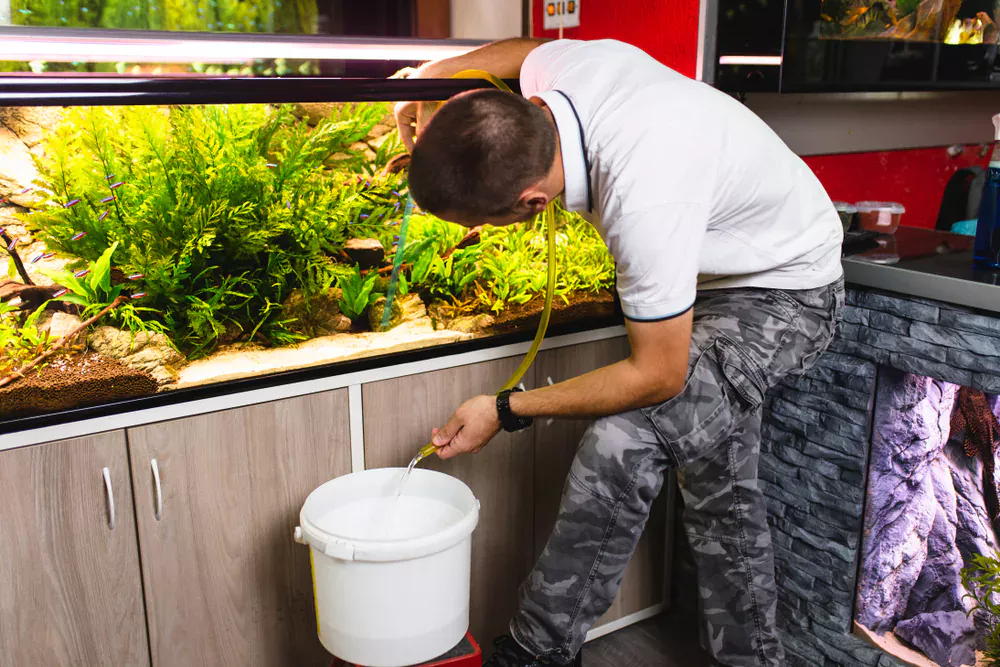
When you are changing the water of your aquarium, you should keep in mind the following things. This will reduce the chances of your fish’s death:
1- Do a test of your water to make sure that the pH, nitrates, and nitrites are all stable.
2- Make sure you are using a high-quality de-chlorinator to treat your tap water.
3- When adding water to the aquarium, use warm water that’s similar in temperature to the water already in your tank.
4- Switch to a more aquarium-friendly soap for cleaning. Avoid liquid soaps with fragrances or other additives.
5- Watch closely for signs of ammonia poisoning, as this is common when new fish are introduced into an aquarium community.
6- To prevent water changes from stressing out your fish, consider only doing partial changes rather than completely changing out all of your tank’s water.
7- Change no more than 25% of the water at one time, and do a test for pH, metals, nitrites, and nitrates after every change.
8- Before adding any new fish to the tank, be sure that you’re cycling your tank for at least three weeks, first.
Conclusion
So now you know why my fish died after water change, but hopefully, the underlying message of this blog post is clear: be mindful of the water conditions you want to create and stick to them. Yes, it’s possible that you’ll get lucky and nothing will happen, but the flip side of that coin is this: if you’re not careful, it could kill your fish.

